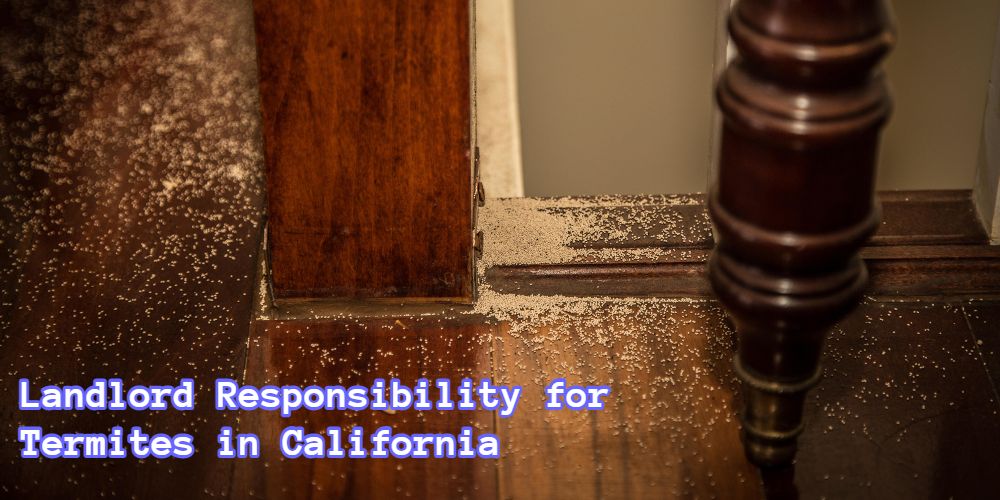Last Updated on March 18, 2024 by Kelvin Nielsen
Are you looking to learn about landlord responsibilities in California? If so, you are at the right place! Whether you’re a tenant or a landlord, this article has you covered.
California law (CA Civil Code 1940-1954.06) gives landlords certain responsibilities. You automatically acquire them after establishing a lease with a tenant. Speaking of a lease…
In California, a lease can be established in either of three ways. That is, either through a written or oral agreement, or after accepting a payment as rent.
In this blog, we’ll walk you through X responsibilities landlords in California have under the statewide landlord-tenant law.
Landlord Responsibilities in California
1. Providing a tenant with a habitable property.
When renting out a property anywhere in California, you must ensure that it meets the basic health and safety requirements. For a property to be deemed habitable under the implied warranty of habitability, it must, among other things, have the following.
- Meet the residential heating requirements.
- Have running hot and cold water.
- Have working smoke and carbon monoxide detectors.
- Not have a pest infestation.
- Have safe stairs and railings.
- Be free of mold and lead-based paint.
In addition to this, you must also conduct repairs that affect a tenant’s habitability within 30 days. If you fail to do so, the tenant may be able to exercise a number of legal options. Including, breaking the lease without penalty, suing for damages, or repairing the issue themselves and deducting the costs from future rent payments.
2. Remove the tenant from the property legally.
This is another responsibility you have under California law. You cannot just wake up one day and decide to forcefully evict the tenant from the property. Trying to evict a tenant illegally by removing their belongings, locking them out, or shutting down their utilities is bound to be a futile process.
The only way to evict a tenant from your California rental property is by following the proper eviction process. The following is a basic overview of the process you must follow.
- Have a legal justification to evict the tenant from your property. Common examples include nonpayment of rent and lease violations.
- Serve the tenant with an eviction notice.
- File a lawsuit with the appropriate court if the matter is yet to be resolved.
- Obtain a copy of summons and complaint after successful notarization of the lawsuit by the court’s clerk.
- Attend the eviction hearing and present your case before the court.
- If the judgment is your favor, you’ll be issued with a Writ of Possession. This will be the tenant’s final notice to leave.
- If the tenant doesn’t move within 5 days, the constable will return and forcibly remove them.
It’s typical for evictions in California to take between 5 to 8 weeks to complete.
3. Abide by the California security deposit laws.
Landlords have a right to require tenants to pay a security deposit as part of the initial move-in costs. That said, there are a number of rules that you must abide by.
One of the rules is ensuring a landlord charges the right security deposit amount. The maximum deposit must not exceed three months’ rent. If the monthly rent amount is $1,500, for instance, then you must not charge anything beyond $4,500.
Another rule requires landlords to only make allowable deductions. These include unpaid rent, cleaning, restoration costs, and damage exceeding normal wear and tear.
State law also requires that tenants’ security deposits be returned within 21 days.
Now, failing to abide by these rules can have tangible consequences for landlords. The tenant may be able to get up to 2X the wrongfully withheld amount, plus court and attorney fees.
4. Notify the tenant before terminating their periodic lease.
If you no longer wish to continue renting to a tenant on a periodic lease, you must give them proper notice.
If terminating the periodic lease of a tenant paying rent on a weekly basis, you must provide them notice of at least 7 days. If terminating the periodic lease of a tenant paying rent on a monthly basis, you must serve them a 30 days’ advance notice.
There are no minimum notice requirements for tenants paying rent quarterly or yearly.
5. Re-rent the property after a tenant breaks their fixed-term lease.
Whether a tenant breaks their lease legally or not, you must take reasonable steps to re-rent the unit. You cannot just sit back and wait for the lease to end and then sue the tenant for the entire rent due under the lease.
That said, a California landlord’s duty to mitigate damages isn’t absolute. You aren’t required to make unreasonable steps to find a replacement tenant. For instance, lowering the rent amount or making major renovations to the property to attract a tenant.
Rather, you must take reasonable steps, such as listing the property and showing it to prospective tenants.
6. Abide by the California rent control law.
Unfortunately for landlords, California is one of the few states that has a rent control law. Known as the California Tenant Protection Act of 2019 (AB 1482), the law applies to most residential properties in California.
The following is a basic overview of the California Tenant Protection Act (AB 1482).
- Rent increases are capped at 5 percent plus inflation, or 10 percent, whichever is lower. And the increase can only be made twice every 12 months.
- Landlords must have a legally justified reason to evict a tenant.
- A tenant has a right to renew their leases for a one-year term, even if the landlord wishes to raise the rent.
- Landlords must give tenants a 30 days’ notice prior to raising the rent amount.
A few exemptions to the CA rent control law exist. The law, for instance, doesn’t apply to detached accessory dwelling units, owner-occupied buildings with less than 4 units, and new buildings built after January 1, 2019.
7. Treat tenants fairly as per the Fair Housing Act.
As a landlord, you must abide by both federal and state fair housing laws. Federal law requires that you treat tenants fairly and equally regardless of their race, color, nationality, sex, familial status, religion, and disability.
What’s more, California law also adds extra protections on the basis of immigration status, gender identity, citizenship status, ancestry, primary language, income source, sexual orientation, and military and veteran status.
Penalties for tenant discrimination based on those protections can be severe. The California Department of Fair Employment and Housing (DFEH) can impose civil penalties amounting to up to $65,000. DFEH can also order you to pay restitution to the tenant, as well as their court and attorney fees.
8. Respect the tenant’s privacy.
California landlords are also responsible for respecting their tenant’s privacy. Except in cases of emergencies or when serving a court order, you must always give the tenant a notice of at least 24 hours prior to entry. The notice must be in writing.
The reason for the entry must also be reasonable. Legitimate reasons for landlord entry include:
- To make a needed repair.
- To respond to an emergency.
- To show the unit to prospective tenants, buyers, or lenders.
- To deliver a package.
- Under court orders.
9. Provide the tenant with mandatory disclosures.
Before renting to a prospective tenant, you must brief them on certain things. Among other things, you must let them know of the following.
- Lead-based concentrations if the unit was built prior to 1978.
- Written information regarding bed bugs. (Civ. Code §§ 1954.603).
- Information regarding known mold.
- A death that has occurred in the unit within the past 3 years. It must be non-HIV or AIDS-related death.
If you fail to provide such information to your tenant, they may be able to use that as a legal ground to break the lease early.
10. Abide by the landlord’s garbage responsibilities.
Under California law, landlords have certain responsibilities when it comes to garbage disposal. You must, among other things, provide adequate garbage receptacles and recycling bins.
You must also make arrangements for regular garbage collection. The specific requirements for garbage disposal services will vary depending on the location of your property.
That said, the general requirements are that landlords must provide one garbage can and recycling bin per household. You must also arrange for garbage collection.
Conclusion
These are the responsibilities landlords have in California. It goes without saying that you must take them seriously for a successful landlording experience.
Disclosure: The content herein isn’t a substitute for advice from a professional attorney. It’s only meant to serve educational purposes. If you have a specific question, kindly seek expert attorney services.
Sources: California Tenant Protection Act (AB 1482), https://www.hcd.ca.gov/, https://leginfo.legislature.ca.gov/, https://www.justice.gov/crt/fair-housing-act-1, https://law.justia.com/codes/california/2021/code-civ/division-3/part-4/title-5/chapter-2/section-1946-2/, https://cite.case.law/cal-app-2d/221/611/,

Hi, I’m Kelvin Nielsen, an experienced landlord and accomplished real estate lawyer. My focus is on answering your questions about renting in the hopes of making your life as a renter or a landlord a bit easier.







